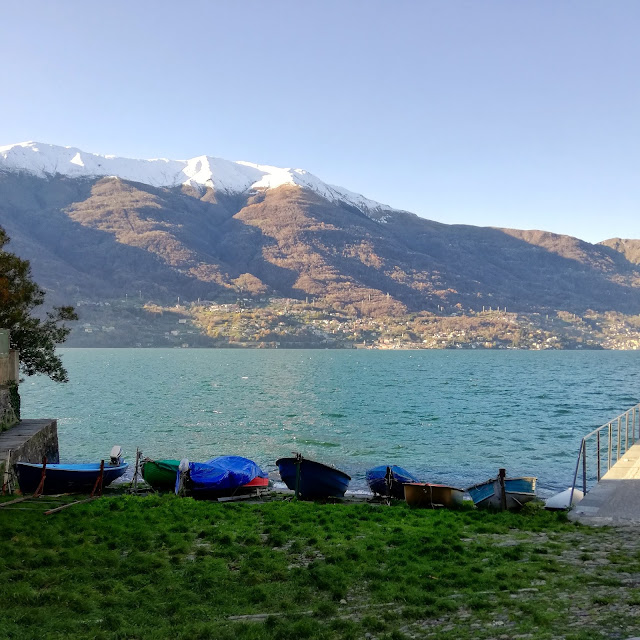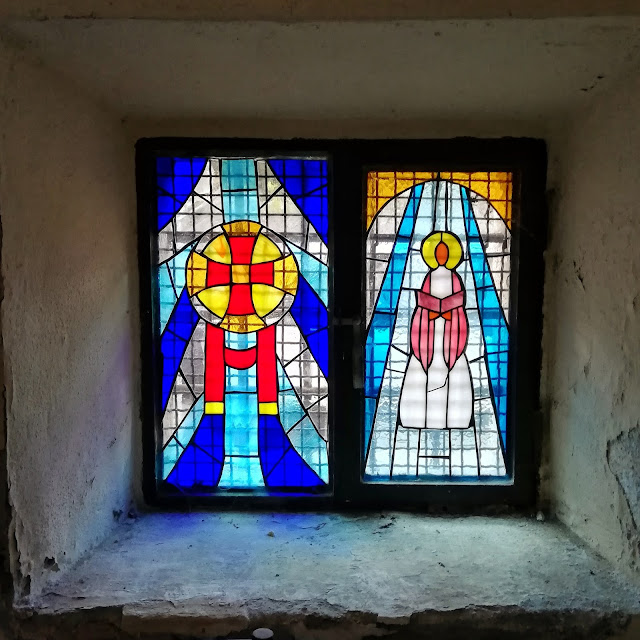A walking tour along the streets of Dervio. An ideal itinerary to discover this idyllic corner of Lake Como in a few hours.

There are some places that you want to visit because you give them an sentimental value. You can feel them close to you even though you’ve never visited them, maybe because your origins come from there. The more time passes the stronger that ideal link gets, until you visit that place and give a real image to those stories you’ve heard throughout life. This is what happened between me and Dervio, on Lake Como, my mother’s place of origin. All my life I’ve heard about it and wanted to visit it on person. At last that moment has come. It’s been a too shot visit for me, but, it’s enough until the moment I’ll be back there. This is the itinerary I suggest you in order to have a taste of Dervio and it’s optimal if you have not more than two hours. Our itinerary starts from…
1. SAINTS PETER AND PAUL’S CHURCH

Leaving the car in the square in front of the church, in Piazza XI febbraio, we are in an ideal area to start our exploration of the village. With a view on the lake, there’s Saints Peter and Paul’s Church, whose Romanesque bell tower beats the time of the town. For years I’ve heard my mother say that they looked outside the window to see what time it was.

Inside it’s wide and bright and enriched by the engraved and golden wooden pulpit.
2. SAINTS QUIRICO AND GIULITTA’S CHURCH

Going outside Saints Peter and Paul’s Church, we take a little street on our right. Walking along this quiet street, framed by the green of the gardens of villas that coast it, we reach a little church that seems to be there for centuries.
Saints Quirico and Giulitta’s Church is small, cosy, essential. The little stained glass windows on the sides of the portal attract the eye with their flamboyant colours and almost invite you to spy inside through their colourful glass.

Keeping going along the street, we reach the highway (SS72), we cross it and take via Martiri della Liberazione and follow it until the highway (SP67).
3. THE STONE WASHTUB

Turning right, we reach a bridge over the river Varrone, which flows tumultuously. We don’t cross the bridge, but we go down the stairs on the right that bring in via Tommaso Grossi. Here there’s a thing that I’ve not seen in Southern Italy yet: a stone washtub. Water doesn’t come out of the taps anymore and the washtub now is here to remind a piece of everyday life of yesteryear in this place.
We continue our walk following this alley, reaching via Giuseppe Greppi, coasting the river Varrone and going back on SP72. We turn into via Don A. Invernizzi and continue until we reach the lake.
4. THE LAKE AND THE LAKEFRONT

We get to the shore of the lake. A lawn, some benches, a breathtaking view: the perfect place to rediscover the peace of mind. After a stop here, let’s proceed toward the lakefront. In front of us there's a beautiful promenade with, from time to time, a little staircase that ends directly in the water. The temptation to go down and get my feet wet is strong!
5. CORENNO PLINIO

Going to Dervio and not visiting the medieval village of Corenno Plinio is a real shame! I wrote about it in detail in this blogpost.
Here we come at the end of this proposal of walking tour in Dervio, to be done in a couple of hours. I hope to come back in this place soon and to dedicate more time to it. Meanwhile, if you have some suggestions about what to see and to do here, leave it in the comments: I’ll be happy to put it among the things to do and to see in my next visit.

Commenti
Posta un commento
Feel free to leave a comment!
I would be glad to know your opinion! ;)
Thank you! :)